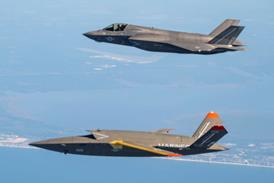TERMINOLOGY
Is it business or corporate?
The US FAA has a simple definition of the difference between corporate and business aviation operations: basically, corporate aircraft are flown by professional pilots, whereas business aircraft are flown by non-professional pilots on company business. This is not a distinction that all countries draw. Even Robert Matthews of the FAA's Office of Accident Investigation, presenting a review of corporate aviation safety at the Flight Safety Foundation/National Business Aviation Association safety seminar earlier this year, admitted that the agency's own statistics and those of the National Transportation Safety Board "do not always apply the term 'business' in a consistent manner". He added: "The data is a bit messy."
There are other factors that tend to heighten the disparities between the two types of operation, both in terms of the aircraft types employed and the safety performance achieved. These include the fact that corporate aircraft are usually multi-engined, jet-powered and flown by two-pilot crews using a sophisticated avionics suite and operating under instrument flight rules (IFR). On the other hand, according to the FAA definition, business aircraft operations usually involve single- or multi-engined aircraft, are normally flown by one pilot and usually piston- or turboprop-powered with more traditional flightdecks, and are more likely to be flying under visual flight rules (VFR).
Fatal accidents
In fact the FAA's figures for fatal accidents involving business aircraft operations in the period 2002-2006 are dominated by single-engined piston-powered aircraft crashes (50), followed by piston twins (23), with the figures dropping to less than five in the case of both single- and twin-turboprop aircraft. Jets do not figure. The FAA's fatal accident figures for corporate operations in the same period show there were two piston twins, two twin turboprops and three jets, but no singles involved.
A popular form of business travel among executives is chartering an air taxi. Since the FAA classifies air taxi operation as a form of commercial air transport (under FAR Part 135 rules), accidents involving these flights are not included in the FAA business/corporate statistics even though they are for business travel, flown by two professional pilots and normallyinvolve the same categories of aircraft as the corporate sector.
This separation of figures for closely related types of operation can skew the picture of what is really happening in a sector that, generically, includes air taxis and fixed-wing air ambulances as well as business and corporate operations.
Source: Flight International























